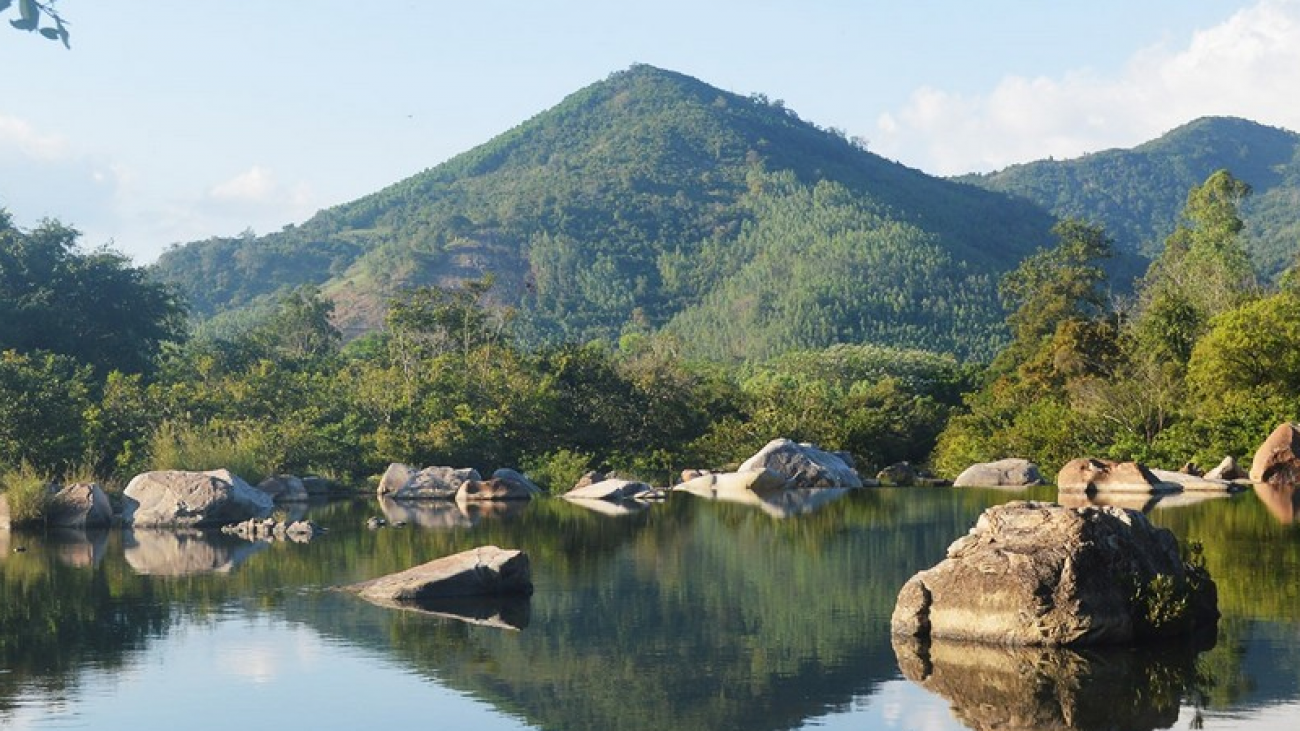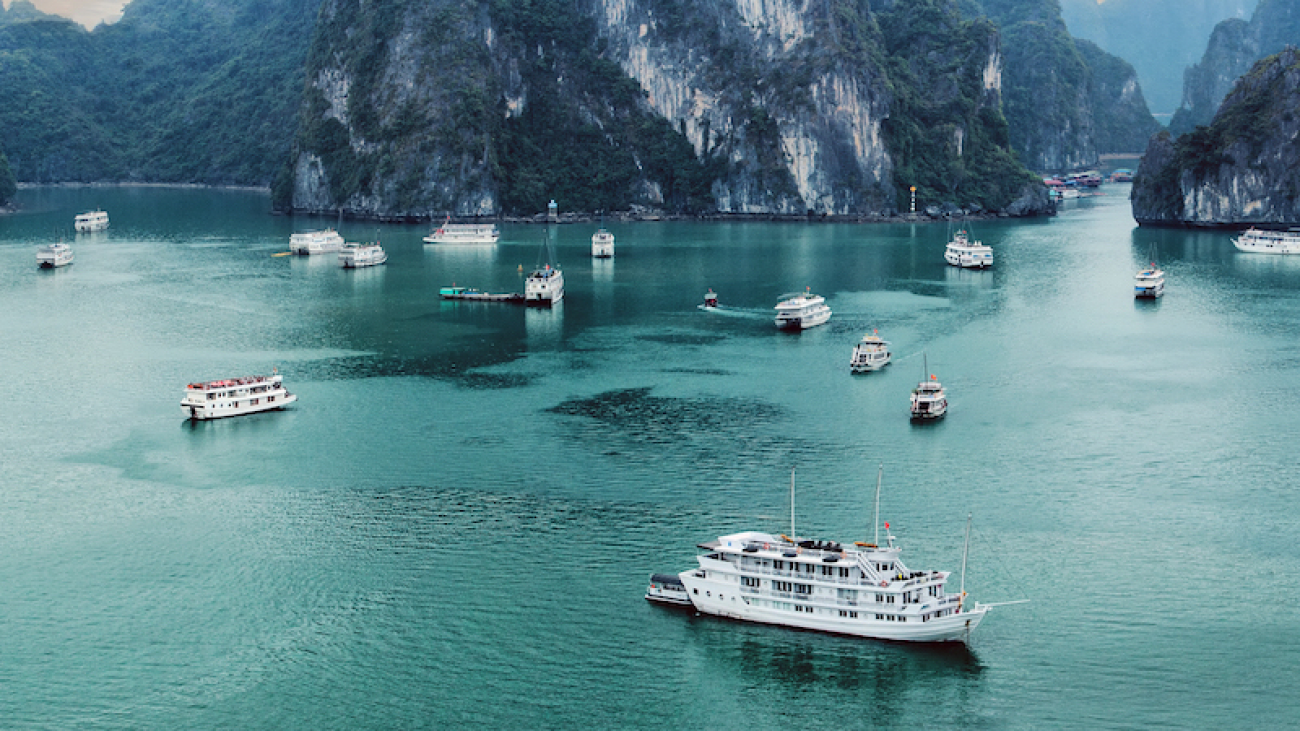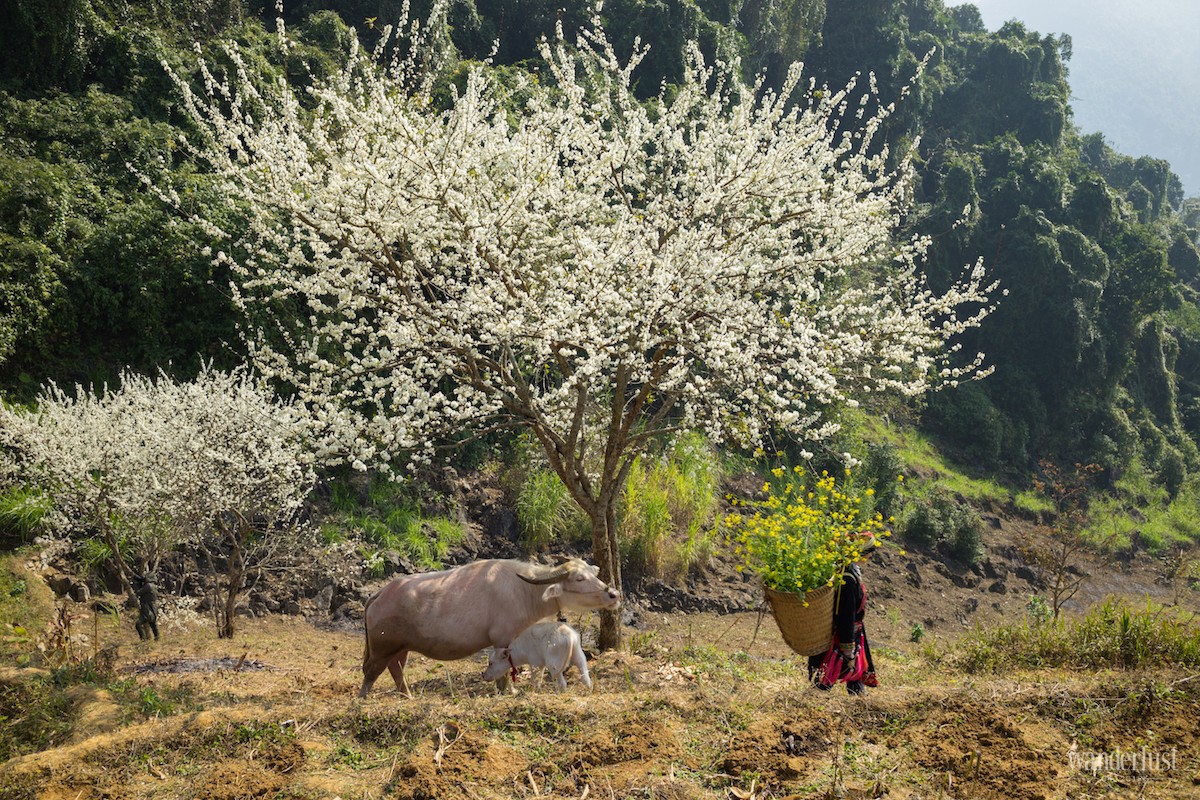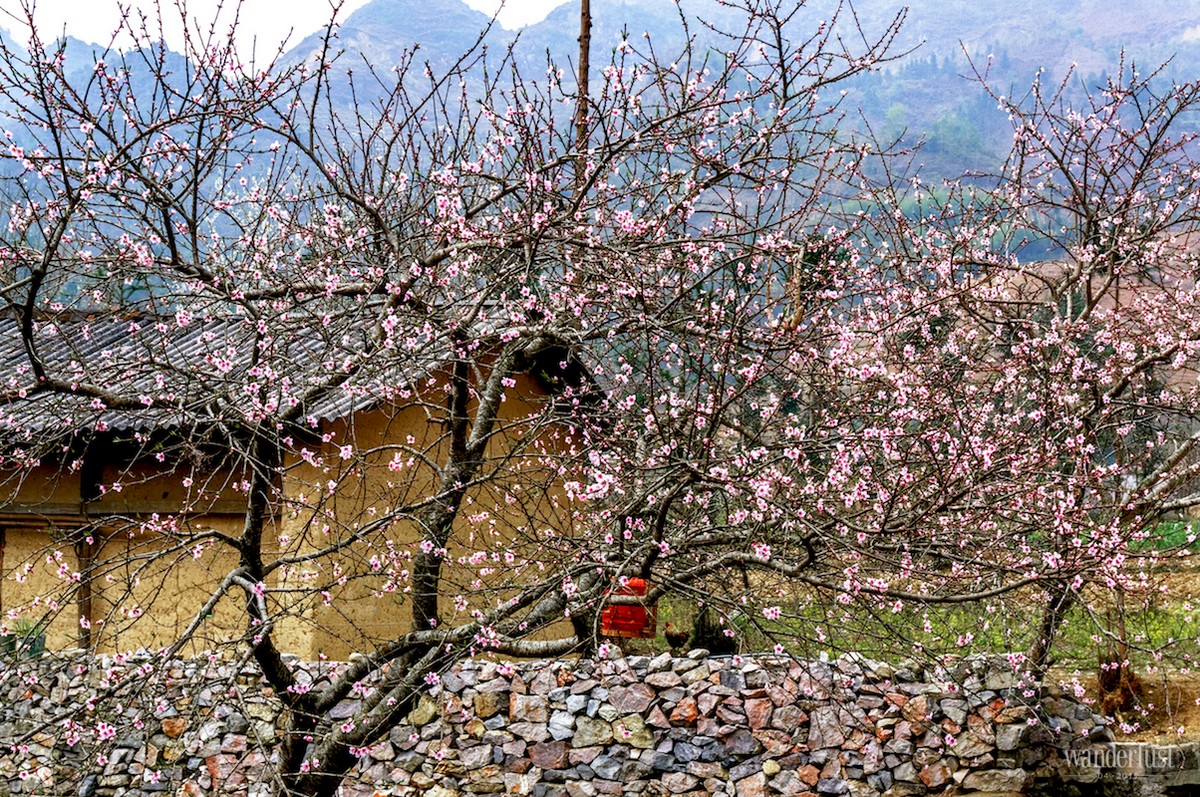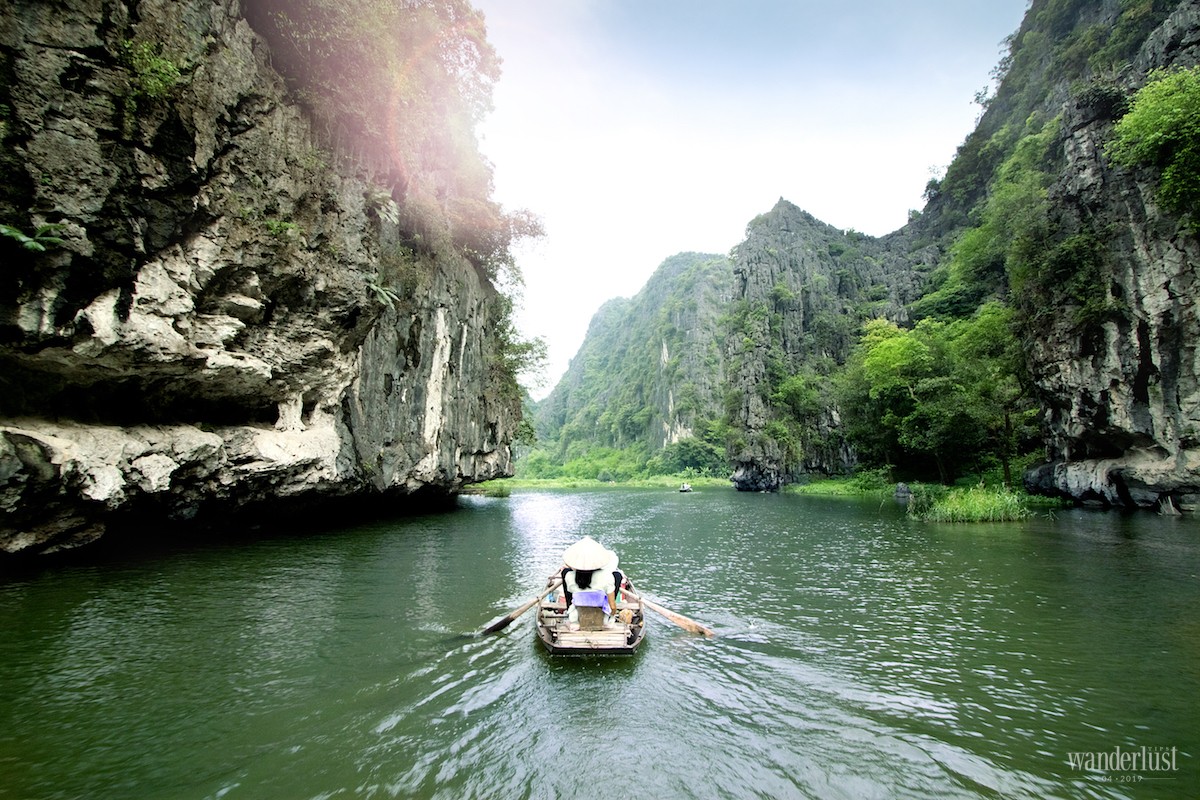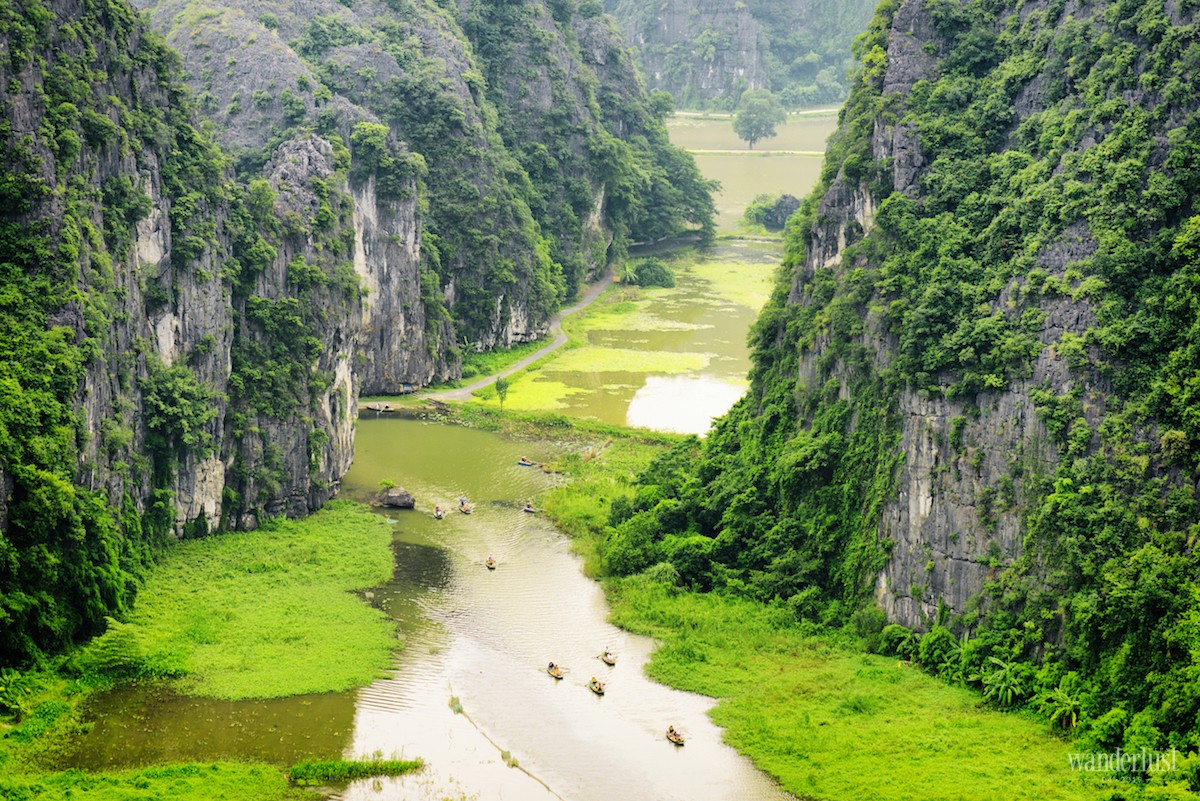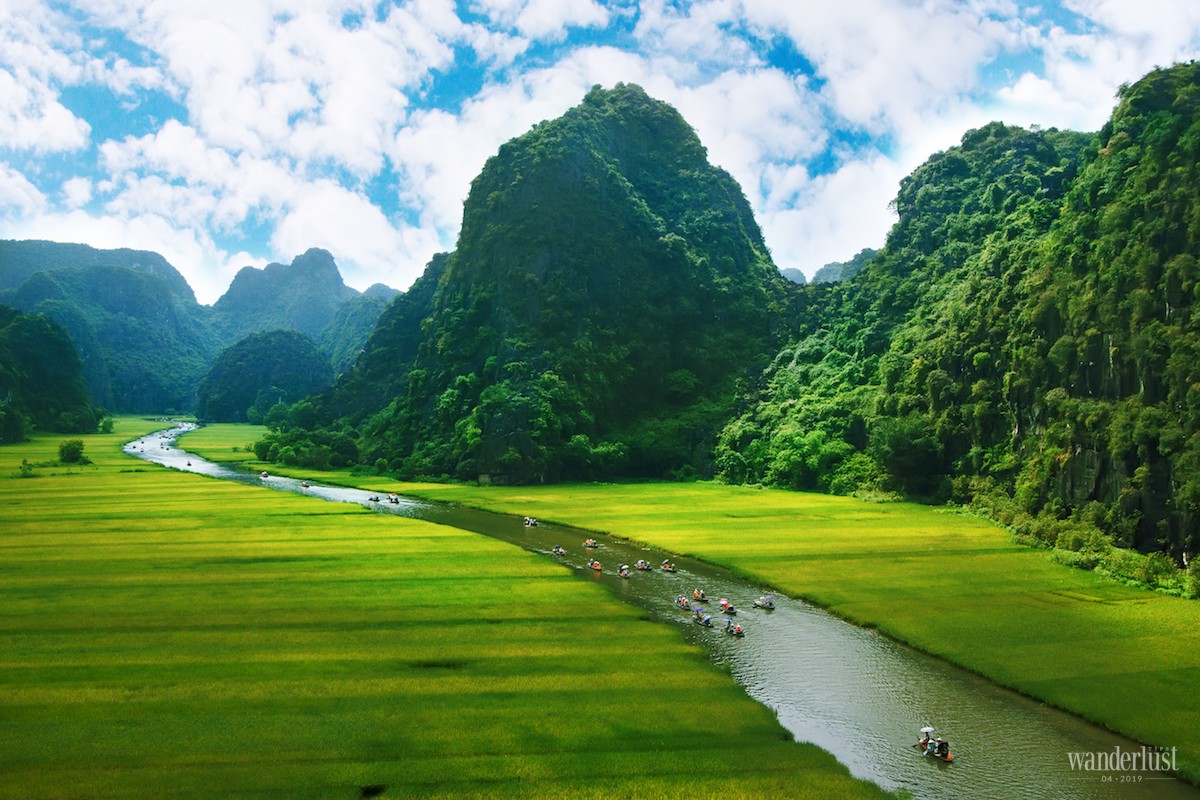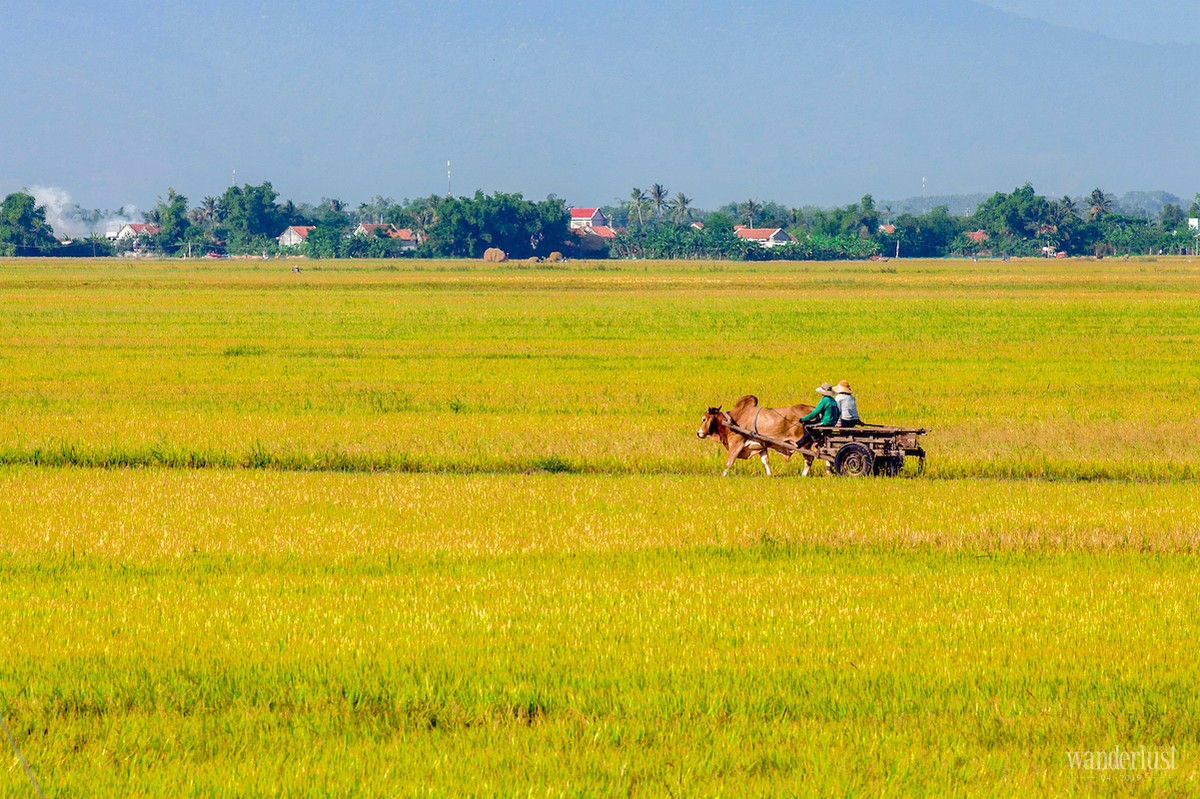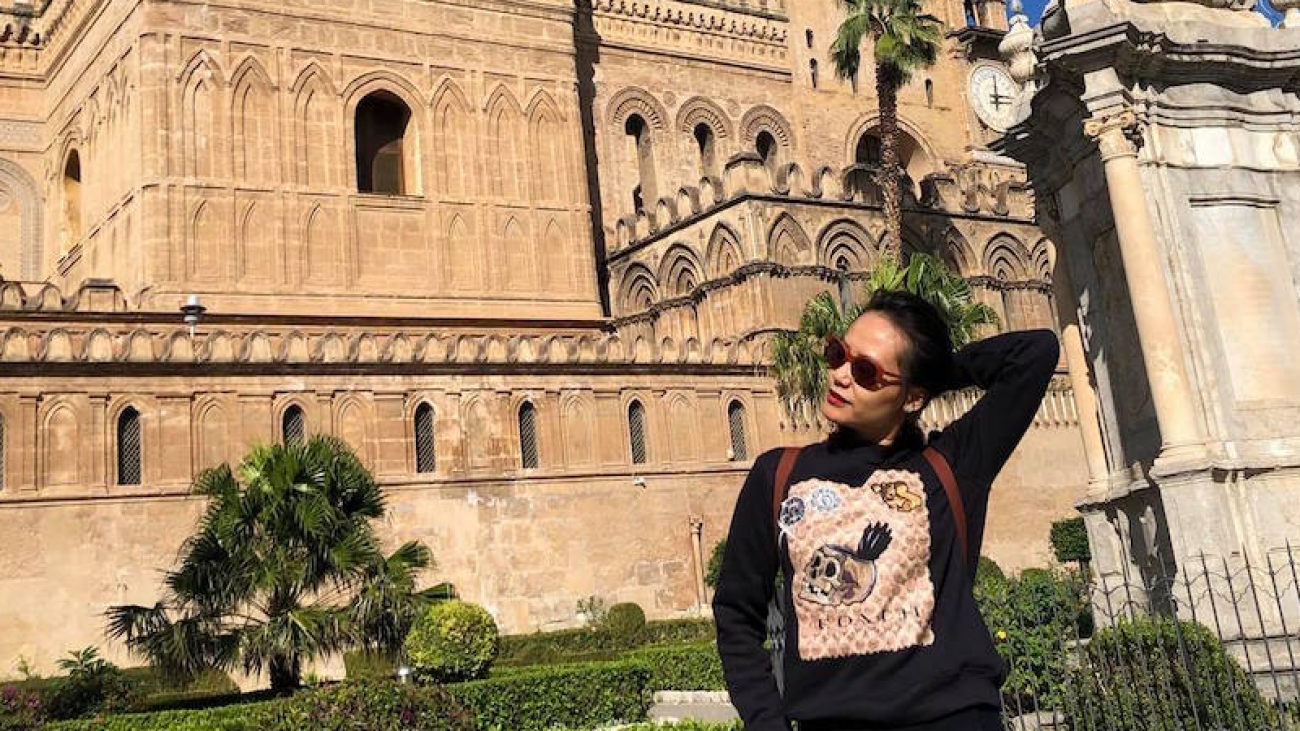[Wanderlust Tips April 2019] Travel to Binh Dinh in the morning, where to go and what to do to have the most enjoyable experiences? Here are eight suggestions from Wanderlust Tips.
[rpi]
KY CO BEACH – LOST IN PARADISE
Located in Nhon Ly Commune, 25 kilometres northeast of Quy Nhon, Ky Co has one side facing sea and is otherwise surrounded by mountains. Blessed by nature, the beach has a charming landscape of rugged cliffs, a crescent moon-shaped seashore, and crystal clear blue water offering a window-like view to bottom and changing its colour at different times throughout the day.

TOP TIPS: There are two options for travelling to Ky Co Beach. Option 1: By boat, combined with a visit to Eo Gió (Windy Strait), Hòn Khô (Kho Island). Book a tour or rent a motorboat which costs VND130,000 – VND150,000/person (this does not include entrance fee to Ky Co tourist area of VND60,000/person). Option 2: By road, round-trip tickets cost VND100.000/person if you walk to the top of the mountain, which is quite a steep path, take Ky Co Resort’s transit bus to the beach. However, saving the walk and travelling directly from Ky Co Resort to the beach the cost is VND150,000/person. Both prices include the entrance fee
KHO ISLAND – THE STUNNING BEAUTY OF THE ISLANDS OF QUY NHON
A small island located right in front of Nhon Hai, shielding this peaceful fishing village from storms. As its name indicates, Kho (dry) is a desert-like island devoid of green trees, covered with rocky mountains and only a few small bushes. Despite this, it has an incredibly beautiful untouched pristine beach with crystal clear blue water. There are many activities for tourists including swimming in the sea, diving to see colourful coral reefs or fishing from the edge of some short cliffs around the island.

TOP TIPS: Driving from the centre of Quy Nhon City, go across Thi Nai Bridge, through Nhon Hoi Economic zone, along Mai Huong Bay, a few kilometres over a mountain pass and you can reach Nhon Hai Peninsula. From there, you can take a boat for 10 minutes to Kho Island. Nowadays, there are many tour operators picking up tourists right in the city centre.
MUST SEE: Phuong Mai Sand Dunes (Nhon Ly Commune) and their exciting sandboarding.
CU LAO XANH (GREEN ISLAND) – ENDLESS BEAUTY OF SKY, SEA AND ISLAND
Located in Nhon Chau Commune, 28 kilometres southeast of Quy Nhon City, Green Island has gorgeous picturesque scenery. The front beach is covered with white sand with a view of the mainland, and the residents of the island mainly live on this side, whereas the back beach is covered in piles of large rocks which all year round face up to howling winds and roaring waves. Cu Lao Xanh (Green Island) also has several interesting attractions like the Cu Lao Xanh Lighthouse, the Fairy Stream, a beach where sea turtles lay eggs, and watching the stunning sunset on the pier.

TOP TIPS: Option1: Take a boat from Ham Tu Dock (Quy Nhon City) for about an hour, the price is VND35.000/person, daily departures at 8.00am and 1.00pm. Option 2: Take a speedboat for 30 minutes/one way, the price ranges from VND3 to 5 million depending on the size of the boat. There is also the option to book a trip for more than one day.
THI NAI LAGOON – THE BIGGEST LAGOON IN BINH DINH PROVINCE
Located to the northeast of Quy Nhon City and stretching for more than 10 kilometres, it is famous for its variety of seafood. All branches of the Kon River and the Ha Thanh River flow into the lagoon which has gradually built it up with layers of alluvial sediment over the years. At high tide, water fills up the lagoon, looking like the rippling ocean on a windy day. At low tide, the water recedes, revealing a thick and smooth mud bottom leading to it being referred to as a Dry Sea (Biển Cạn) in historical texts. On a small mountain inside the lagoon is a little temple built by fishermen to worship the god of water. Looking like an ancient tower, the mountain is known as Fortune Teller Tower.
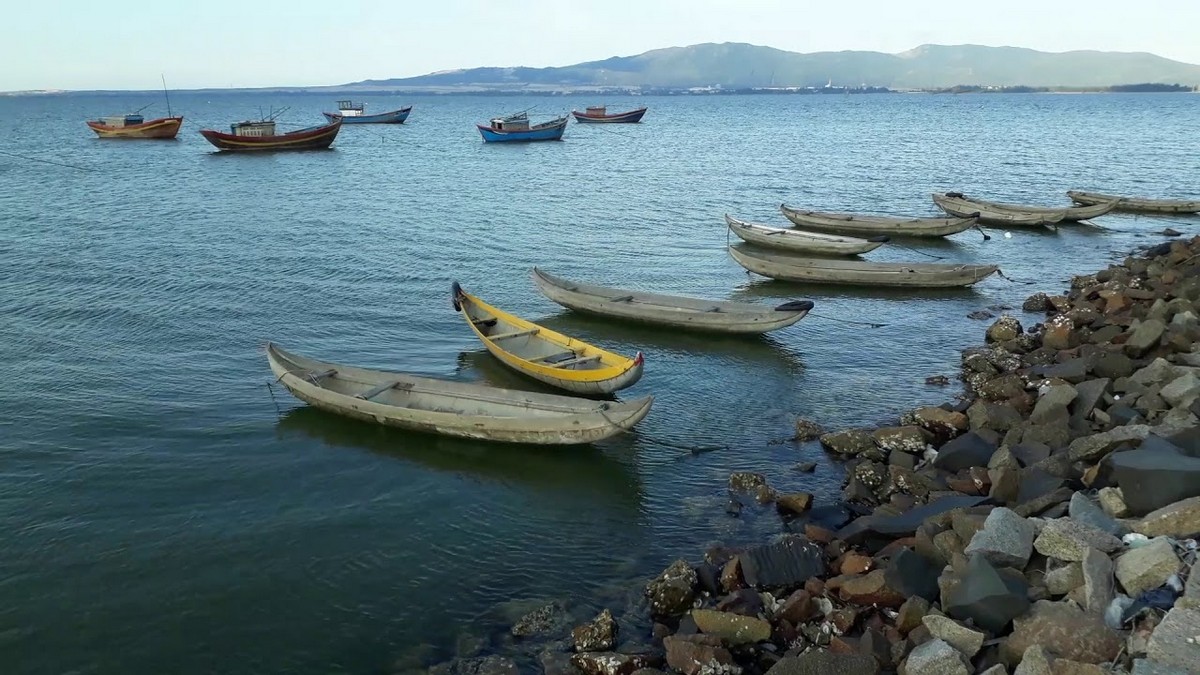
TOP TIPS: Make an early visit to see the sunrise as the sun rising over the Trieu Chau mountain range and the sunlight shining off the water of the lagoon make for a charming and fascinating scene.
VI RONG CAPE (DRAGON FIN CAPE) – A DUET OF THE SEA AND THE ROCKS
Located in Long Phung Village, My Tho Commune, Phu My District in Binh Dinh Province, Vi Rong Cape is rocky reef protruding about 20 meters into the sea, which includes a sea cave in the middle and is surrounded by fascinating formations of emerging rocks. From a distance, Vi Rong Cape seems like a giant dragon ready to fly towards the sea. The huge rocks towering above the sea combined with the waves crashing in and around them create an image of a dragon spitting water.
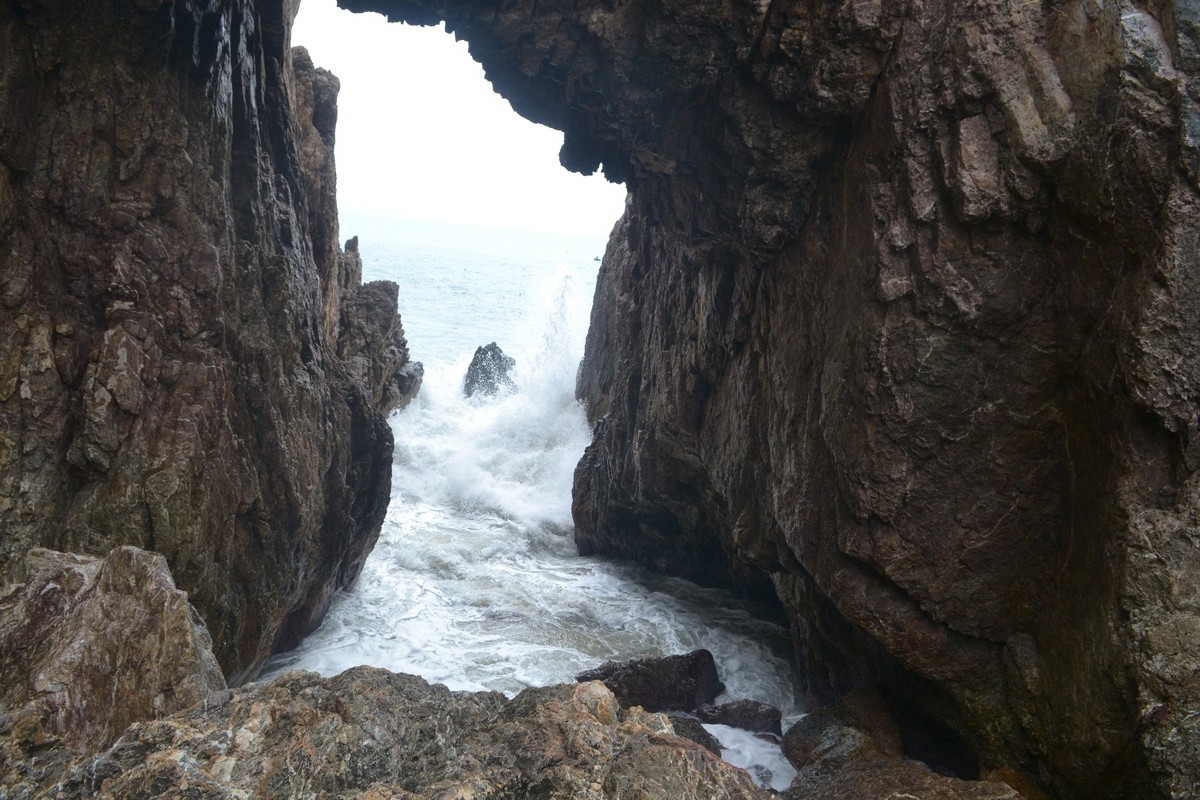
TOP TIPS: Besides taking in the majestic natural landscape, you can also enjoy swimming in the sea or participate in exciting group activities. For something to eat, try Hai Hien restaurant, the nearby Hong Tham Café, or head back to the city centre for more restaurant options.
MUST SEE: Hon Nuoc Lighthouse (formerly named Vung Moi Lighthouse).
HAM HO – IMMERSE YOURSELF IN NATURE
Ham Ho Eco-tourism Site is located in Tay Phu Commune, Tay Son District, about 50 kilometres northwest of Quy Nhon City. At the foot of the majestic Truong Son Mountain Range and nestled amidst the forest, Ham Ho is a spectacular natural tourist attraction thanks to Troi Lap River, Chuong Islet, Bong Islet, Da Thanh Islet and a diverse forest ecosystem.
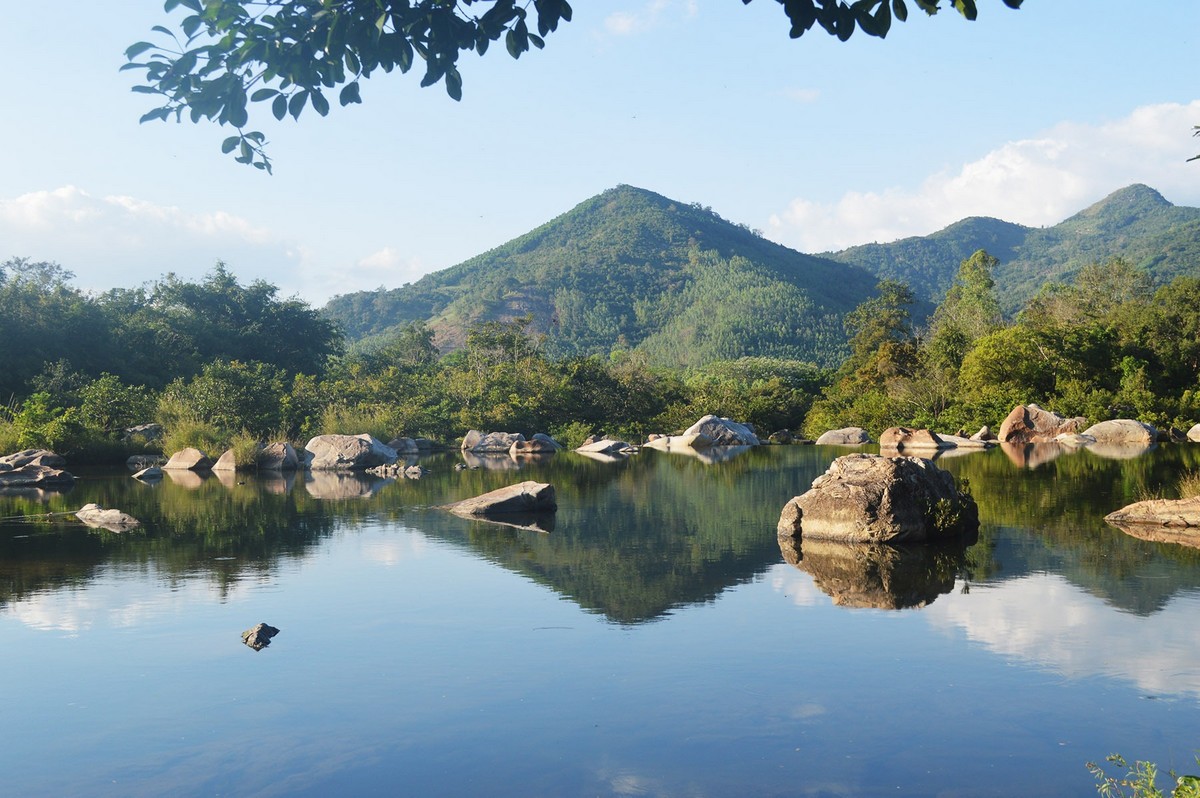
TOP TIPS: You can participate in many interesting activities such as visiting ancient houses, exploring local lifestyles, riding on a horsedrawn carriage, kayaking, fishing, lying in a hammock under the trees, camping, staying at a stilt house, making a campfire, singing karaoke, or having a massage. Immersing yourself in nature will give you the best moments of relaxation. You can plan your own trip or buy a oneday trip for VND699,000/person.
NUI MOT LAKE ECO-TOURISM SITE – BINH DINH’S BLUE JADE
Located in An Truong Village, Nhon Tan Commune, An Nhon District, about 40 kilometres from Quy Nhon City, it was a valley surrounded by mountain ranges before being turned into an irrigation lake, which has made the views more charming and verdant. You can hike through the mountains and explore the ancient Ong Dai Cave, which was a shelter for soldiers and a place for food storage or cruise around on a boat to admire the beautiful picturesque scenery, taking a break at Do Waterfall and visiting Canh Tien ethnic village.
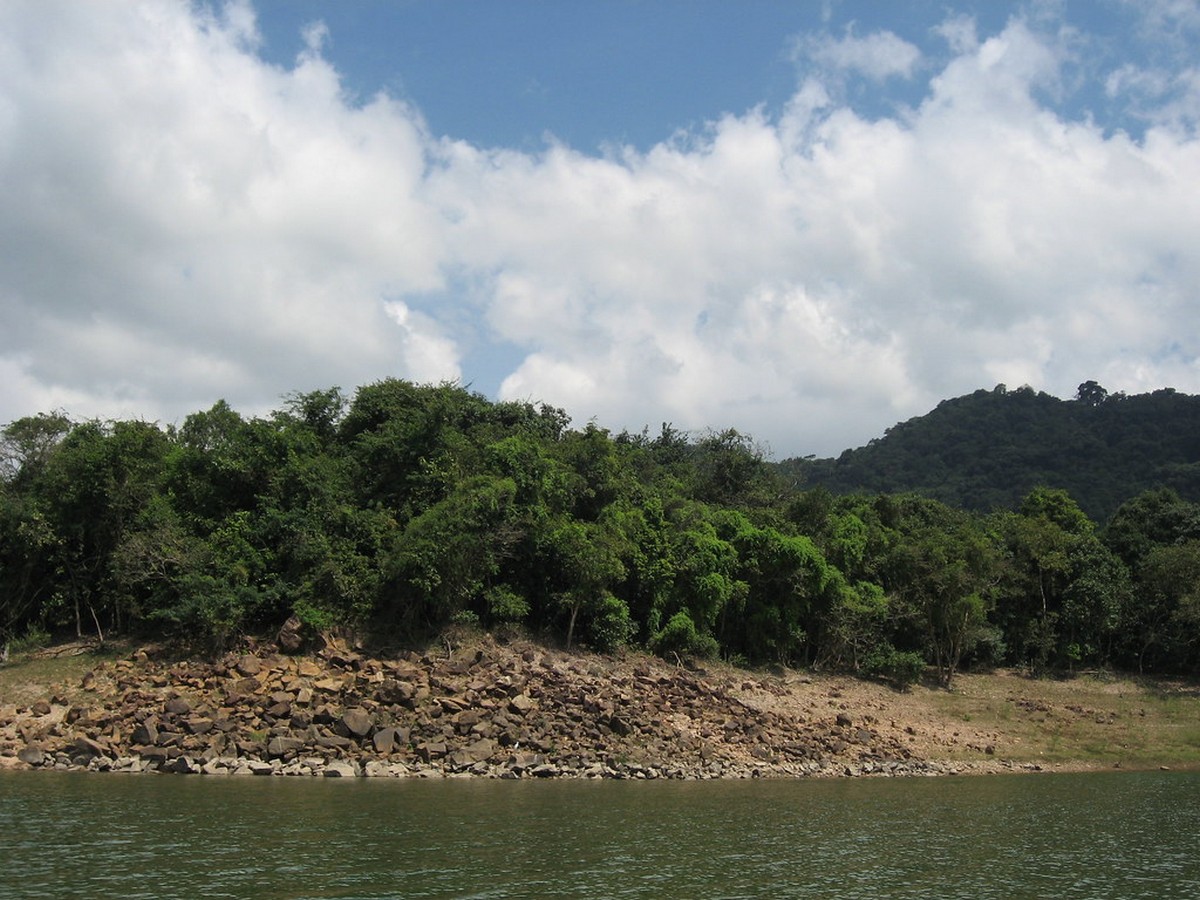
TOP TIPS: From Quy Nhon City, you can travel by car or scooter along National Road 19 to Truong Village, follow the road signs and turn right, keep driving 8 kilometres more down the road, and then you reach Nui Mot Lake. If you take a bus, you should get off at Cai Ba crossroads (Nhon Tan Commune, An Nhon District) and take a motorbike taxi for the final 8 kilometres.
VUNG CHUA MOUNTAIN – HIGHLANDS IN THE MIDDLE OF THE SEA CITY
Vung Chua Mountain is about 600 meters above the sea level, located right next to the seaside city of Quy Nhon and is a popular tourist attraction. Visiting Vung Chua, you will experience many interesting things, in particular, how the appearance of the mountain is affected by the weather. On sunny days, the sky is clear and there are fresh green trees, and you can see everything so clearly. Whereas, on cloudy days, the cool air and blurry mist can make you feel like you are lost in dreamy Dalat.
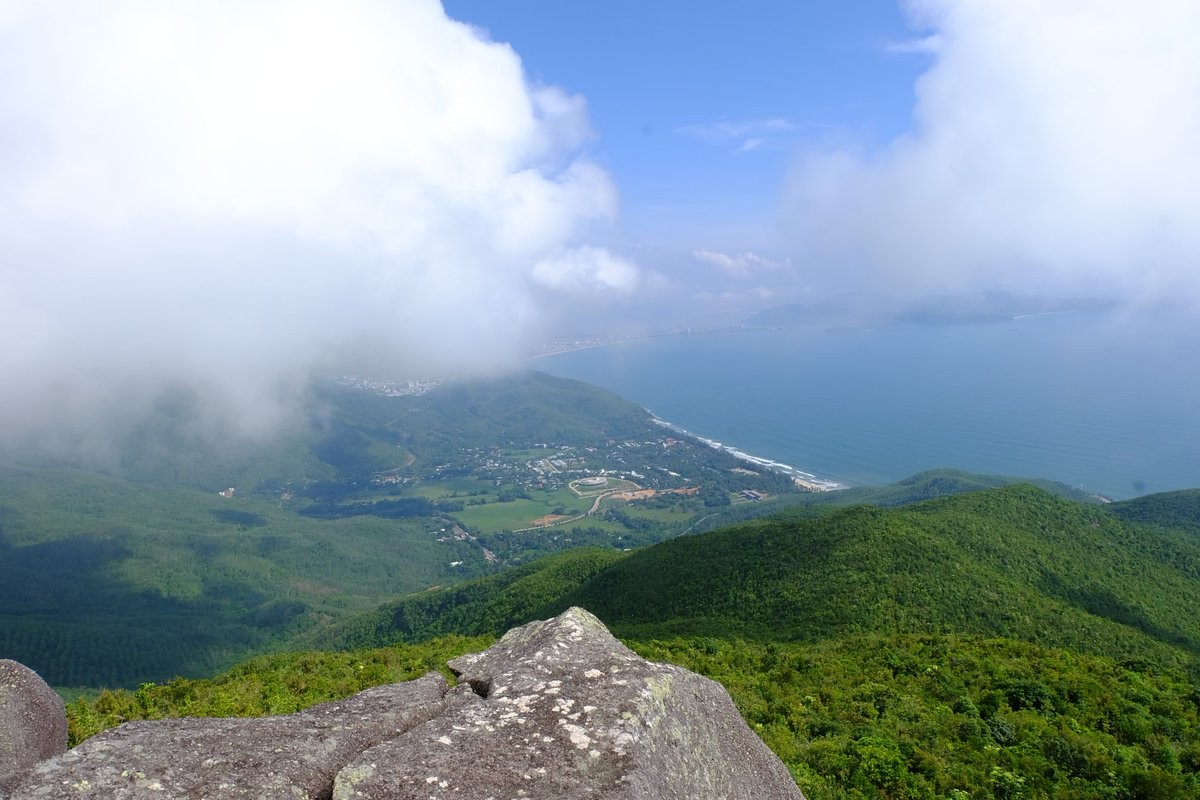
TOP TIPS: From the centre of Quy Nhon City, drive on National Road 1D, along this road you will pass by Ghenh Rang Tourism Area, then turn right to Quy Hoa at the crossroads, notice on the right side there is a road leading you to the mountain. Follow this road for a while and then it separates into two directions: the left leads to the Fairy Stream Tourism Site, and the right leads to Vung Chua Mountain.
Wanderlust Tips


